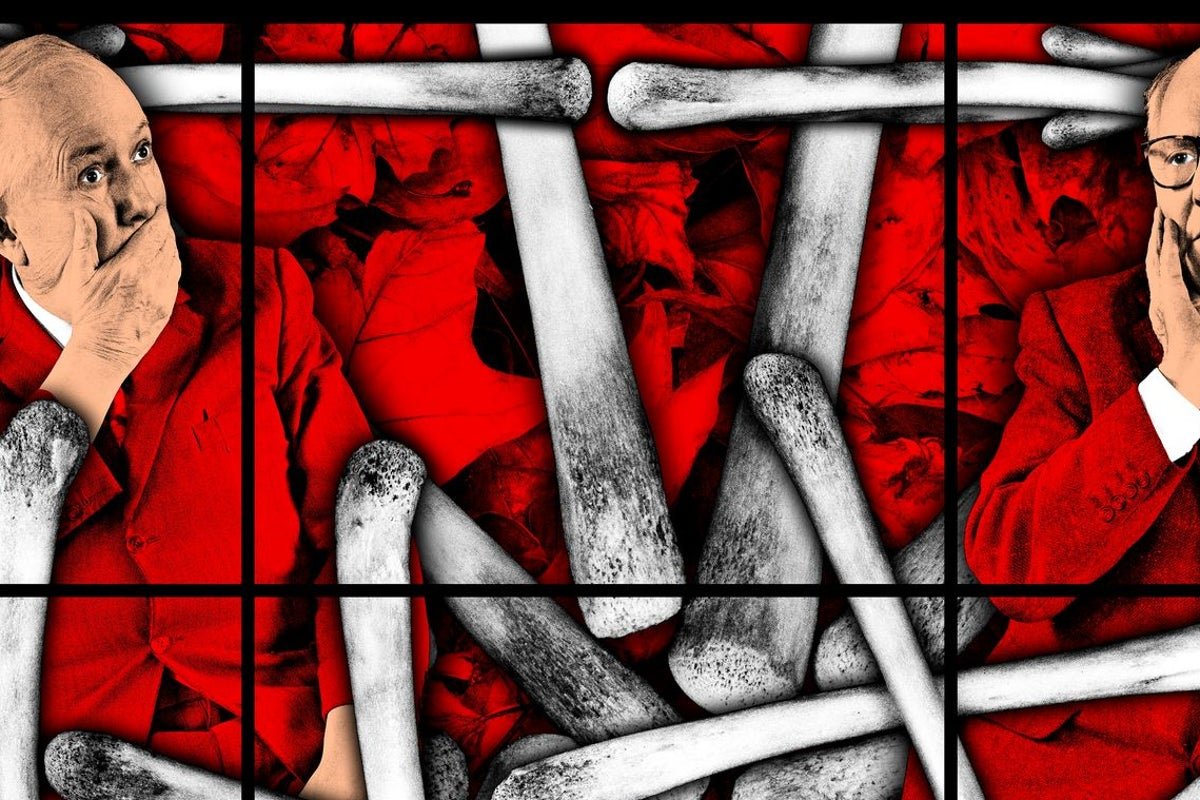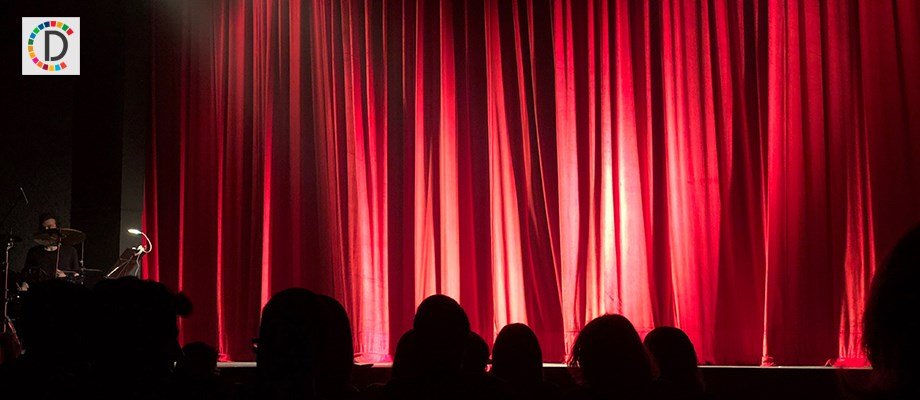Let’s hear it for that great Sixties singing duo whose performances defined an era. No, not Simon & Garfunkel. Though they are similarly aged and had an equally momentous impact on their field. Gilbert & George met in 1967, during the Summer of Love, as students at St Martin’s School of Art (though they eschewed psychedelic paisleys in favour of immaculately tailored tweed suits). Styling themselves as “singing sculptures”, they became living works of art, their faces painted the colour of bronze, for performances of Flanagan & Allen’s soppy pre-war hit “Underneath the Arches” that sometimes lasted an entire day.
While these events are now celebrated as some of the first manifestations of British conceptual art, paving the way for all the raucous, genre-busting art that’s come since, Gilbert & George themselves have long since been consigned to the role of “national treasures”. Now in their eighties and still sporting their trademark fine tailoring, the pair, who married in 2008, are seen as somewhat crusty but lovable eccentrics who make a virtue of predictability. They still live in the same street in London’s East End, where they moved in 1969, favour the same restaurants they’ve frequented for decades, and spout political views that appear designed to wind up the liberal-left-veering art establishment.
Gilbert & George gave up performance art long ago in favour of large-scale photo-works, with brilliant colours and plentiful use of their own sometimes suited, sometimes naked bodies, the essential form of which has barely changed since the 1980s. If these works have occasionally raised eyebrows with their overt homoeroticism, photographs of bodily fluids and liberal use of the c-word, the most controversial thing about George Passmore (born in Plymouth in 1942) and Gilbert Proesch (born in San Martin de la Tor, Italy, in 1943) these days is that they proudly project themselves as Brexit-voting Tories.
The news that the Hayward Gallery is presenting a major exhibition of their “21st Century Pictures” prompts a sinking feeling: a doubt that their works of the third millennium will add much to what was very extensively explored at the back end of the last.
At first sight, everything appears exactly as you’d expect: brilliant, flat synthetic colours outlined in black in grid formats, with mostly symmetrical compositions that create a feel midway between faux-medieval stained glass and hyper-contemporary street art. The scale, however, has grown ever larger, so the frantically patterned works comfortably fill the Hayward’s handsome brutalist spaces, and to genuinely immersive effect. Much of the imagery has been floating through their work for a good half-century: the detritus of the East End streets, from leaves, representing “nature”, to rent boys’ adverts (“good looking working-class young man”), while our anti-heroes ham it up in what could pass for the same suits they were wearing in 1967.
Yet the use of digital editing and manipulation – the really big addition to their 21st-century work – has made their use of pattern and texture, and the slicing and splicing of the human figure vastly more complex, fluent and multidimensional.
.jpg)
Alternately deadpan and gurning for the camera, G&G put themselves in ever more preposterous positions: screaming at us from tortuously distorted digital “portraits”, lying asleep on heaps of chicken bones (from KFC, of course), “dancing” with gigantic date stones. The dazzling and wildly decorative interplay of imagery – union jacks, maps, newspaper headlines – feels as stylised and essentially formulaic as, say, Hindu religious sculpture. That analogy becomes explicit in Fates (2005) in which they poke out golden tongues like blank-eyed deities, while making V-signs at the viewer. The whole vast, bonkers tableau is framed by images of a grinning Bengali youth from the streets of contemporary Whitechapel.
Where once G&G were criticised for apparently uncritically including a racist slur against Pakistanis seen in local graffiti, in their works, now they’re happy to drop in “White Bastards”. They’ve always boasted of welcoming whatever came their way in the East End’s “microcosm” of human life, not least in the form of good-looking young men with the hard-right views once common in this area. But a huge digital collage emblazoned with the words, “Our grandparents didn’t vote for fascists… They shot them!” suggests these proudly Tory provocateurs might just be shifting left. Admittedly, the slogan is from a found flyer from the anarchist group Class War, which appears as a kind of mask over each of their faces. But they weren’t obliged to also splurge it at near-billboard size over the middle of the work.
.jpg)
Far from having abandoned performance, Gilbert & George’s entire life and career together can now be seen as a single piece of performance art, 60 years long. How much of their public image as absurdly precious, but foul-mouthed, Thatcher-admiring, sexually voracious old queens is an act is anyone’s guess (I’d make a guess that it’s exaggerated, cartoon-like, but essentially the facts). The wall texts make much of their determination to make us look beyond the accepted, expected view, quoting their desire to “bring out the bigot from inside the liberal and conversely to bring out the liberal from inside the bigot”.
While I’d be reluctant to read too much into these often hilariously provocative works, there are images that stop us in our tracks. Bomb, in which their faces appear darkened so they might pass for Asian, feels like a work perfectly pitched to now, with its background of newspaper headlines about terrorist bomb attacks superimposed over huge English flags. Noticing the date – 2006 – it feels like these anachronistic reactionaries were somehow ahead of the spirit of the time.
Anyone coming to this exhibition expecting a retrogressive last gasp from an octogenarian duo from another age will find it quite hectically of the moment. Gilbert & George brought to art a quirkily dated, throwaway, but essentially pop cool, and in an old age that’s proving far from quiet, they retain more than an element of rock’n’roll edge.
Gilbert & George: 21st Century Pictures is at the Hayward Gallery from 7 October until 11 January






